#Kalaloch Creek
Photo
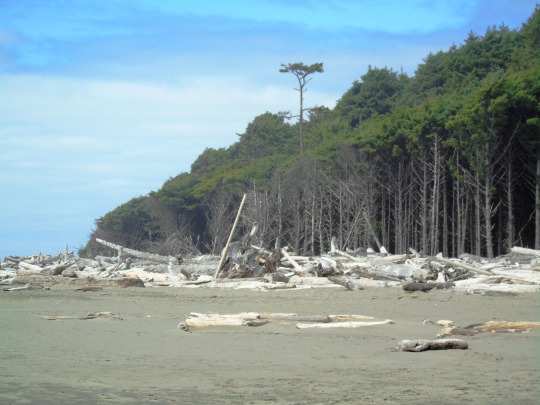
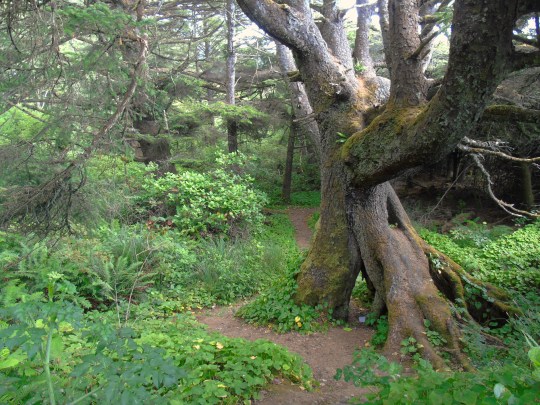
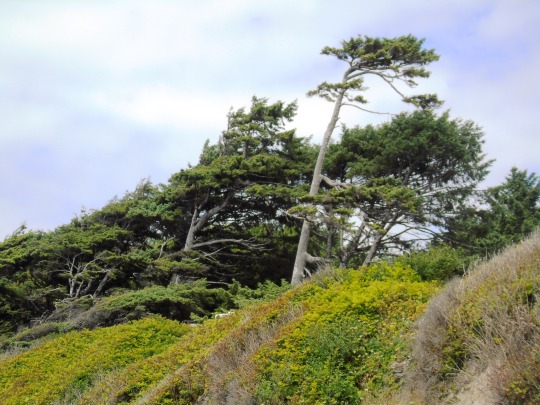

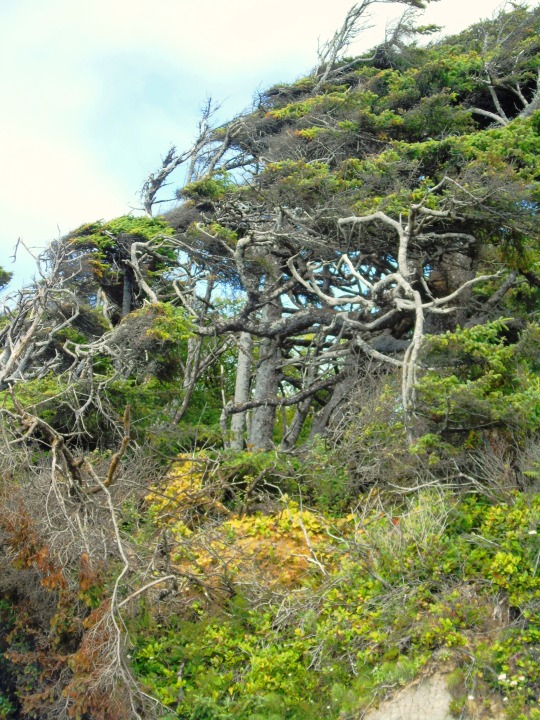
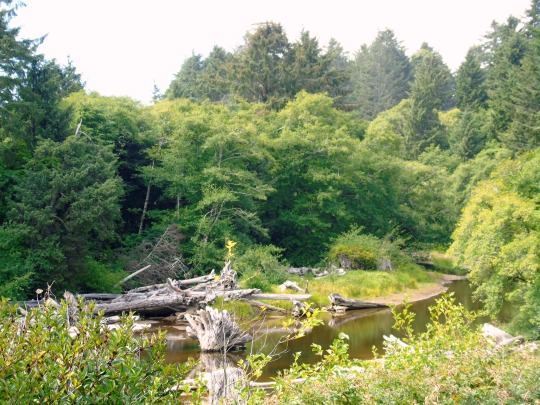
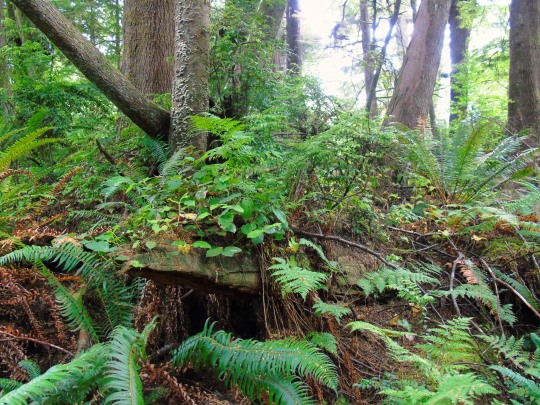


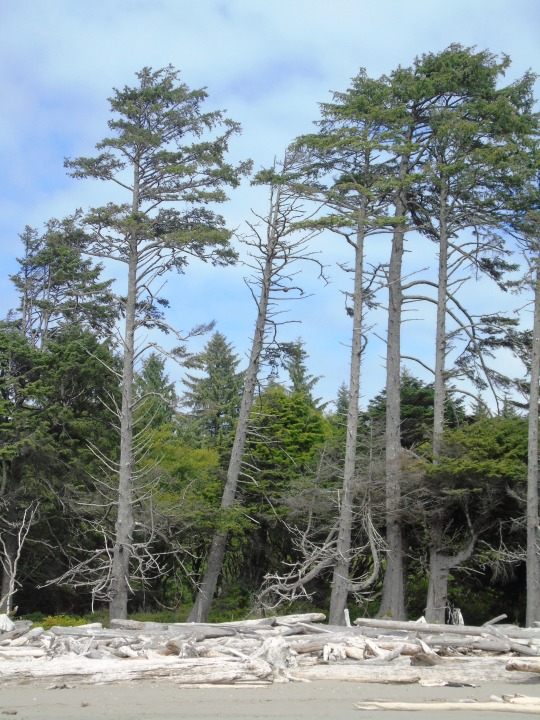
World Rainforest Day
Donate or volunteer your time to helping or raising awareness about how we can save the rainforests, and keep these crucial ecosystems alive.
The rainforests are keeping our planet alive. They’re home to half the world’s animal species, they provide us with freshwater, and are essential for keeping our climate stable. Yet every second, one and a half hectares is lost, while each year, 78 million hectares of precious rainforest are destroyed. That’s why World Rainforest Day has been created to take decisive action to combat deforestation, reduce the effects of climate change, and protect our rainforests for future generations.
Learn about World Rainforest Day
World Rainforest Day was first created in 2017 by the Rainforest Partnership. They work with Indigenous Peoples living in rainforest environments and launch projects to help restore and regenerate healthy rainforests with local communities. The day is about raising awareness of the importance of the rainforest and what it does for us. By coming together on the day, we can all take positive and hopeful action to protect the rainforest and preserve its lifespan as it has maintained our own lives for thousands of years.
There are hundreds of events, from within local communities to virtual events, education initiatives in schools, charity projects, and the hundreds of small actions we can take each day ourselves to protect the rainforest. Whether you’re going solo in your rainforest approach or part of a group of friends, family members, or colleagues, you’ll be forming part of a community spanning the entire globe. The website has award-winning videos, educational material, and advice for people looking to protect the environment.
The Rainforest Partnership itself has many community-based projects in the Amazon, but the day itself is backed up by the involvement of over 70 global partners, from environmental advocates to media outlets, all striving for positive and affirmative action that preserves the rainforest. The tagline for the event is “Because the World Can’t Wait”, a powerful statement and call to action for people worldwide.
History of World Rainforest Day
The key focus of the day is about remaining positive and focusing on what we can do to save the rainforest. Our rainforests have sustained us for thousands of years, circulating oxygen, keeping local communities alive, absorbing carbon dioxide, and keeping our water fresh and clean. The Rainforest Partnership has been spreading this optimistic message since 2007 when it launched to help protect biodiversity, Indigenous Peoples, and combat the effects of climate change.
The core focus of the Rainforest Partnership is to save the rainforest by working on rainforest-based community projects that create a positive impact on the local peoples and wildlife that rely on the rainforest each day. Although their headquarters are based in Texas, they are primarily in the rainforest with their Latin American based team. Why has the Rainforest Partnership been so successful? Because it’s partnered with organizations worldwide to create a unified response to deforestation. As an affiliated member of the UN Economic and Social Council, they can consult and advise organizations and businesses across the world on sustainable and ecologically led practices.
But just how long has the rainforest been helping us out for? The Amazon rainforest has existed for around 60 million years, forming when the Atlantic Ocean had expanded enough to create a tropical climate in the Amazon basin. Following the mass extinction of the dinosaurs, it is believed that a moister climate developed, leading to the expansion of the rainforest. Over millions of years, it is theorized that the rainforest might have suffered many reductions and expansions, caused by factors like expanding and contracting glaciers.
So why is the disappearance of the rainforest so dangerous this time around? The leading causes of deforestation include logging, mining, and industrial development, as well as the clearance of land for agriculture. As more extensive areas are cleared for logging and pasture, more infrastructure is needed, leading to increased clearance to accommodate roads and large machinery. As more and more rainforest is removed, the surrounding wildlife habitats and homes of Indigenous Peoples are also more significantly disrupted. The scale of deforestation can cause climate change, flooding, desertification, and soil erosion—all things which threaten our planet and our way of life.
World Rainforest Day Timeline
56-33 million years ago
It is estimated that the rainforest likely forms during the Eocene era, following a reduction of tropical temperatures when the Amazon basin is formed.
40000 BC Humans begin modifying rainforests
Humans are influencing the rainforests by living in them and modifying them throughout history.
1986 World Rainforest Movement begins
This international initiative was started to strengthen the movement of people all over the world in defense and protection of the rainforests.
1994 Rainforest Cafe opens
This jungle-themed restaurant opens its first location in Bloomington, Minnesota in the Mall of America.
2017 First World Rainforest Day
Launched to create awareness about the plight of the rainforest and people who inhabit it, World Rainforest Day was created by the Rainforest Partnership.
How to Celebrate World Rainforest Day
This is the perfect opportunity to take the burden off the branches of the rainforest and find ways to help protect the homes of its local wildlife and peoples. Find an optimistic outlook on preserving the planet by sharing on your social media and blogging about how you can save the rainforest. You might get involved by donating or raising awareness of charities like the Rainforest Partnership, or participating in virtual events and networks.
You can even host a rainforest awareness day yourself by arranging an event that highlights the cause or contributes towards a rainforest protection charity. If you’re not a fan of organizing events, why not participate in a sponsored run, climb, trek, or even walk to raise funds? You can also search for registered tree planting charities, where you can sponsor the planting of a tree to give back to the rainforest. If you’re trying to engage the kids, why not take advantage of the activity packs on the day’s website and distribute these to your friends and families for a day of fun-fuelled activities.
If you’re looking for the opportunity to make a lifestyle change, this day is also the chance to make eco-friendly choices to help save the future of our rainforest. For instance, deforestation due to agriculture is a big part of the rainforest reduction. Why not work to reduce your food waste by making sure you’re only purchasing and using what you need? Buying goods from ethical companies that donate to the environment is also a sure-fire way to ensure its protection.
Helping your local wildlife is also an excellent way to sustain global biodiversity, and even help some migrating birds on their way home. Plant insect-attracting flowers in your garden or balcony to share some love with our feathered friends as they fly back to their tropical climate. This day is the perfect opportunity to take many small steps or host one big event to show our appreciation for our rainforest.
World Rainforest Day FAQs
What is the theme of World Rainforest Day?
The theme for each World Rainforest Day changes each year, with past themes including “Protected together. Now. Forever.” and “Protected Together”.
Why do we celebrate World Rainforest Day?
Celebrating the natural resources of the rainforests of the world, World Rainforest Day encourages humans to protect and preserve them.
When is World Rainforest Day Celebrated?
World Rainforest Day is celebrated each year on June 22.
What is the most interesting fact about the rainforest?
Rainforests take up only 3% of the area of the planet, but are home to more than half of the planet’s species.
Who started World Rainforest Day?
World Rainforest Day was started in 2017 by the Rainforest Partnership, which is an organization that creates people-powered solutions to protect the deforestation problems in the rainforest.
Source
#Kalaloch Beach#Olympic Peninsula#Olympic National Park#summer 2017#USA#Kalaloch Creek#Washington#Pacific Northwest#Pacific Ocean#landscape#countryside#woods#tree#fir#pine#original photography#travel#vacation#tourist attraction#landmark#World Rainforest Day#22 June#flora#nature#dead wood#temperate rainforest#driftwood
4 notes
·
View notes
Text
Un buon posto dove atterrare ツ
𝐊𝐚𝐥𝐚𝐥𝐨𝐜𝐡 è un'area di villeggiatura all'interno dell'Olympic National Park, nella parte occidentale della contea di Jefferson (Washington, Stati Uniti).
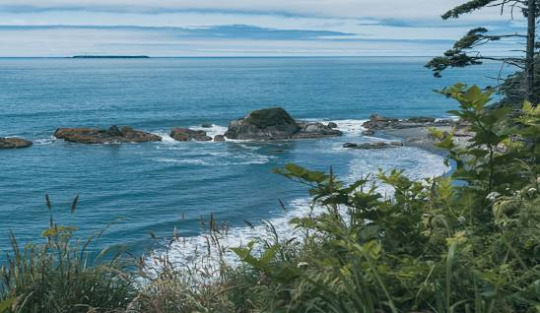
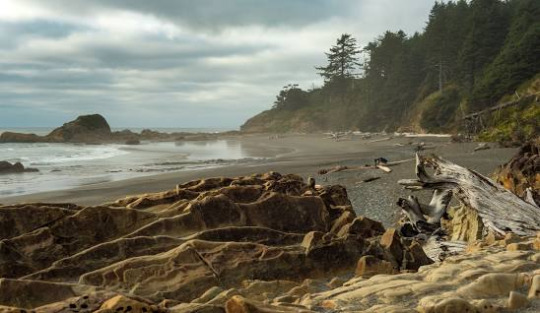
ll nome Kalaloch è deriva da Quinault, pronunciato Kq–â-lā'–ȯk, che significa un buon posto dove atterrare, lancio e atterraggio della canoa o atterraggio riparato. Il sito era uno dei pochi luoghi di atterraggio sicuri per le piroghe tra il fiume Quinault e il fiume Hoh.
Gli artefatti scoperti nel Parco nazionale, sono la prova che i primi esseri umani abitavano la penisola da 6.000 a 12.000 anni fa.
Oggi, otto tribù (Elwha Klallam, Hoh, Jamestown S'Klallam, Makah, Port Gamble, Quileute, Quinault, S'Klallam e Skokomish) vivono in riserve lungo le coste. Nel 1855 e nel 1856, le tribù della Penisola cedettero le loro terre e le loro acque al governo federale.
Nel 1889, Washington divenne uno stato; il presidente Grover Cleveland creò l'Olympic Forest Reserve nel 1897 (ribattezzata Olympic National Forest nel 1907). Becker utilizzò il legname fresato dei tronchi di legni riversati sulla spiaggia per costruire il lodge principale e le cabine.
Per preservare alcune delle terre forestali primordiali di Washington, nel 1938 il presidente Franklin D. Roosevelt designò 898.000 acri (363.000 ettari) come Parco nazionale; due anni dopo, il presidente Roosevelt aggiunse al parco 300 miglia quadrate (780 km 2 ).
Il presidente Harry S. Truman aggiunse 75 miglia (121 km) di deserto costiero al Parco nel 1953 (inclusa l'area di Kalaloch).
Nel 1976, il Parco Nazionale Olimpico è stato designato Riserva Internazionale della Biosfera.
Il National Park Service acquistò la proprietà Becker nel 1978, chiamandola Kalaloch Lodge.
Il Parco nazionale è stato designato, nel 1981, come sito del patrimonio mondiale; nel 1988, il Congresso ha approvato la designazione del 95% del parco come Olympic Wilderness.
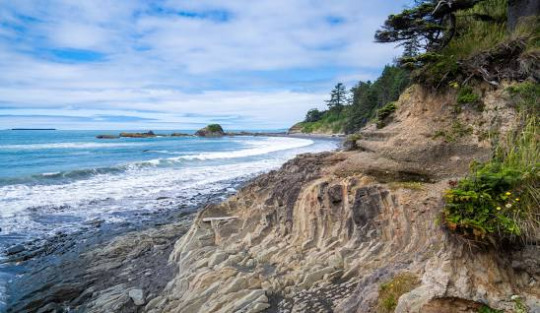
Circa 73 miglia (117 km) di spiaggia nel Parco Nazionale Olimpico offrono opportunità di beachcombing; a Kalaloch, sette sentieri sulla spiaggia conducono a escursioni costiere e a Kalaloch Creek.
Le possibilità di pesca a Kalaloch includono: pesce persico, salmone e trota autoctona; con la bassa marea, si può scavare alla ricerca di cannolicchi.

Aquile calve, tridattidi dalle zampe nere, svassi dalla gola rossa, scoter neri e pellicani bruni sono qui tra i maggiori avvistamenti; dalle scogliere di Kalaloch, si possono vedere balene grigie in migrazione, leoni marini, focene e foche del porto, lontre marine e orche.
Il National Park Service gestisce una stazione dei ranger nella zona, durante l'estate.
#𝐊𝐚𝐥𝐚𝐥𝐨𝐜𝐡#area di villeggiatura#Olympic National Park#contea di Jefferson#Washington#Stati Uniti#Quinault#lancio e atterraggio della canoa#atterraggio riparato#piroghe#fiume Quinault#fiume Hoh#artefatti#Parco nazionale#da 6.000 a 12.000 anni fa#riserve#1855#1856#governo federale#1889#Grover Cleveland#Olympic Forest Reserve#1897#Olympic National Forest#1907#Becker#1938#Franklin D. Roosevelt#Harry S. Truman#1976
0 notes
Text
Kalaloch Creek Meets the Pacific, Olympic National Park
While my partner was at a conference in Seattle in October, 2016, I drove around the Olympic Peninsula. Most of the way north from Aberdeen, the rain never let up. I was disparing of getting any decent photographs, but I perservered. US Highway 101 enters Olympic National Park in northern Grays Harbor County. Shortly thereafter, it crosses the county line into Jefferson County. Almost 45 years earlier, I had traveled this same route with a friend from Switzerland. We camped on the beach, unaware that there was a tsunami warning. In 2016, that was not an issue, and as I stopped at the overlook where Kalaloch Creek meets the Pacific Ocean, I was able to get this photo. It is one of my more popular Washington photos, judging by the sales I've made. And now you can have it as wall art hanging in your home. Just choose which size meets your needs best.
0 notes
Photo
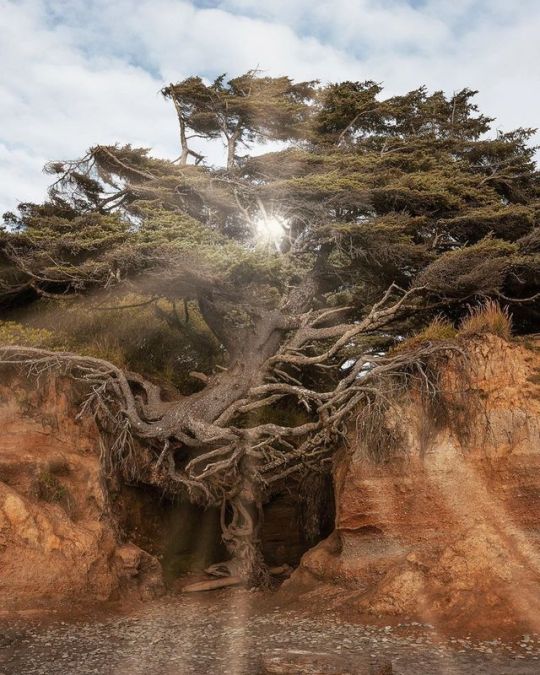
“The Tree of Life” as it has come to be known, is a Sitka Spruce. With a large portion of its roots completely exposed this is a testament to the species ability to grow fast in poor soil climates. Each year the creek running beneath it erodes more and more of the already loose soil that the tree is anchored too, and each year people return to this beach to find it still clinging to #life (at Kalaloch Beach, Olympic National Park) https://www.instagram.com/p/B2279DoAXbQ/?igshid=12ocdutxo8f6n
31 notes
·
View notes
Text
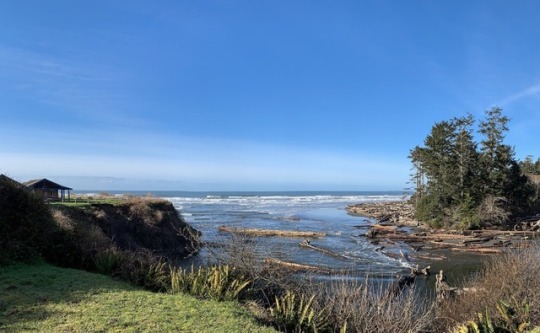
Confusion between creek and ocean. Between forest and driftwood. Kalaloch on the Olympic Coast. WA
14 notes
·
View notes
Photo

Best Things to do in Olympic National Park
Best Things to do in Olympic National Park: With its incredible range of precipitation and elevation, diversity is the hallmark of Olympic National Park. Encompassing nearly a million acres, the park protects a vast wilderness, thousands of years of human history, and several distinctly different ecosystems. Located on Washington's Olympic Peninsula, the park has four regions, including 70 miles of wild Pacific coastline, alpine areas, old-growth temperate rain forests and the forests of the drier east side. My name is Rob Decker and I'm a photographer and graphic artist with a single great passion for America's national parks! I've been to 50 of our 61 national parks — and Olympic National Park has so many different areas, there are tons of things to see and do! You can hike in the mountains, kayak or canoe in a lake or river, play in the tide pools, relax in the hot springs...and so much more! I've explored many areas of Olympic National Park — so I'm ready to help! If this is your first time to the park, or your returning after many years, here are some of the best things to do in Olympic National Park! Exploring the Pacific Coastline The coastal portion of the park is a rugged, sandy beach along with a strip of adjacent forest. It is 60 miles long but just a few miles wide. While some beaches are primarily sand, others are covered with heavy rock and very large boulders. The most popular piece of the coastal strip is the 9-mile Ozette Loop. The Park Service runs a registration and reservation program to control usage levels of this area. From the trailhead at Ozette Lake, a 3-mile leg of the trail is a boardwalk-enhanced path through near primal coastal cedar swamp. Once you arrive at the ocean, you can continue out on the headland trails for spectacular views and sunsets. Some of the best places to enjoy the Olympic coast include: Rialto Beach Second Beach Third Beach James Pond Kalaloch Beach 4 Ruby Beach Tidepool Activities The most popular tidepools areas are at Kalaloch's Beach 4 and Mora's Hole in the Wall. Rangers offer programs at both locations. Second Beach, Third Beach, Ruby Beach and many other coastal wilderness locations are also excellent places to view intertidal life in the park. Explore Olympic's Rivers by Kayak and Canoe There are many kayak and canoe options in Olympic National Park's rivers and lakes. Here's a quick rundown of some of the most popular spots to see the park from the water. Paddle The Rivers of Olympic National Park Elwha River (Class II-IV) This river can be paddled most of the year, but the best season is in the spring or early summer. The most common put-in sites are in the lower portions of Glines Canyon and Altair Campground. Hoh River (Class II-III) This river offers scenic views of old-growth rainforest, but is frequented with log jams. Always scout ahead before paddling to avoid hazards. The most popular put-in locations are at the Hoh Campground and near the park entrance station on the Hoh River Road. Queets River (Class II-III) Queets River is a great place to experience secluded rain forests during higher water levels. In late summer, the river is often blocked by large debris and water that is too low for paddling. Log jam hazards may exist throughout the year. Popular put-in sites are the Queets Campground above Sam's Rapid and the Hartzell Boat Launch. Quinault River (Class II-V) For expert kayakers willing to hike into the backcountry, the Quinault River offers challenging water. From the Graves Creek trailhead, hike 2.5 miles to Pony Bridge. This 3 mile route is through a gorge and has a mandatory portage at Dolly Falls. For calmer waters, a popular launch site is near-end of the North Shore Road at the bridge. Sol Duc River (Class III-V) For experienced kayakers, a 1.2 mile hike up the North Fork Trail in the Sol Duc Valley to the launch site offers fun water above Salmon Cascades. For experts interested in rapids, put-in at Salmon Cascades Overlook. Enjoy The Lakes of Olympic National Park Lake Crescent Big, deep, and blue, Lake Crescent offers a scenic paddling experience, particularly in the early morning when winds are most likely to be calm. Winds often come up in the afternoon and can quickly create waves of a foot or more. Boat launches include Storm King Ranger Station and Fairholme. Kayaks and canoes can be rented at concession operated Log Cabin Resort and Lake Crescent Lodge. Lake Ozette Near the coast and filled with summer water lilies, Lake Ozette offers a secluded paddle journey. Two boat launches exist at the Ozette Ranger Station and Ozette Campground. Kayak and Canoes can also access a few backcountry campsites. Sudden weather changes are common in the Ozette area -- always check the forecast and plan for the possibility of sudden, strong winds and waves. Lake Quinault In a rainforest valley, Lake Quinault boasts mountain views and old-growth forests. Afternoon winds are common here, so always be prepared. Two boat launches are found on the U.S. Forest Service operated Falls Creek and Willaby Campgrounds. Boat rentals are available at the concession operated Lake Quinault Lodge. Fishing in Olympic National Park Olympic National Park protects over 70 miles of Pacific Coast, 600 lakes, and 4,000 miles of rivers and streams that support some of the most extensive runs of wild salmon, trout, and char remaining in the Pacific Northwest. Only catch and release fishing is allowed, which improves native fish populations by allowing more fish to remain and reproduce in the ecosystem. This practice provides an opportunity for increasing numbers of anglers to enjoy fishing and to successfully catch fish. Releasing native fish caught while in a national park will help to ensure that enjoyment of this recreation opportunity will last for generations to come. Fishing gear is perhaps the most important factor affecting whether a fish will survive being caught and released. Use artificial lures or flies. Use of bait is prohibited in all park waters. Use rod, reel, and line of sufficient strength to quickly land the fish Use properly sized single circle or barbless hooks. Visit The Hoh Rainforest Throughout the winter season, rain falls frequently in the Hoh Rain Forest, contributing to the yearly total of 140 to 170 inches (or 12 to 14 feet!) of precipitation each year. The result is a lush, green canopy of both coniferous and deciduous species. Mosses and ferns that blanket the surfaces add another dimension to the enchantment of the rainforest. The Hoh Rain Forest is located in the stretch of the Pacific Northwest rainforest which once spanned the Pacific coast from southeastern Alaska to the central coast of California. The Hoh is one of the finest remaining examples of temperate rainforest in the United States and is one of the park's most popular destinations. The Hoh lies on the west side of Olympic National Park, about a two-hour drive from Port Angeles and under an hour from Forks. The Hoh Rain Forest is accessed by the Upper Hoh Road, off of Highway 101. See Olympic National Park on Foot Day hikes of varying length and difficulty are found throughout the park. Some are universally accessible while others are more challenging. Because of the diverse nature of the park, and depending on how much time you're able to spend in the park, you'll want to choose one or more areas to explore. Before You Go... Even on short hikes, be prepared for changeable weather. Carry food, water, raingear and extra layers of clothing. Do not drink water directly from streams. Boil water or use a water filter or other treatment that kills or filters giardia and cryptosporidium. Iodine tablets do not kill cryptosporidium. Stay on trails to avoid injury to yourself and the park's vegetation. Pack out all trash, including food waste. Wildlife Viewing Birds Many bird species share Olympic's skies. Bald eagles, northern pygmy owls, black oystercatchers and sooty grouse are among the 300 species of birds found in the diverse habitats of the park. Deer Black-tailed deer can be encountered in nearly all areas of the park. Deer often roam in the mountainous and forested locations within the park and tend to be more active during the morning and evening. Olympic Marmots Spot these charismatic animals at Olympic's higher elevations. Trails near Hurricane Ridge and alpine trails make prime destinations for marmot sightings during the summer. Roosevelt Elk Most elk sightings occur in Olympic's lower valleys and rainforests. Elk encounters occur throughout the day, but are most common during dusk or dawn. Salmon Olympic's rivers are home to all five species of Pacific salmon, as well as anadromous steelhead and bull trout. Although there are salmon migrations throughout the year, fall is the best time to view the salmon's dramatic upstream journey. Most rivers in the park host a fall salmon run, but the Salmon Cascades Overlook in the Sol Duc Valley provides one of the best views from late September to Early October. Whales The Olympic coast offers many opportunities to view whales during their migration seasons of April - May and October - November. Prime whale watching sights include Kalaloch, Rialto, and Shi Shi Beaches. Mountain Goats Although not native, mountain goats can been seen high elevation areas of the park and may be encountered along alpine hiking trails. They occasionally roam near Hurricane Ridge Visitor Center. Black Bears Black Bears are seldom sighted in areas with high human presence, such as roads and Visitor Centers. Most sightings, while rare, occur along backcountry trails. Exploring Olympic National Park in Winter At an elevation of 5,242 feet, Hurricane Ridge is Olympic's alpine destination in winter. Typically snow-covered, Hurricane Ridge provides opportunities for snowshoeing, cross-country and downhill skiing, snowboarding, tubing and more. Hurricane Ridge's winter season is generally mid-December through the end of March. Click here to see the Olympic National Park poster Rob Decker is a photographer and graphic artist with a single passion for our national parks! Rob is on a journey to explore and photograph each of our national parks and to create WPA-style posters to celebrate the amazing landscapes, vibrant culture and rich history that embody America's Best Idea! Click here to learn more about Rob and the National Park Poster Project https://national-park-posters.com/blogs/national-park-posters/best-things-olympic-national-park?utm_source=rss&utm_medium=Sendible&utm_campaign=RSS
0 notes
Text
Amerika 2017
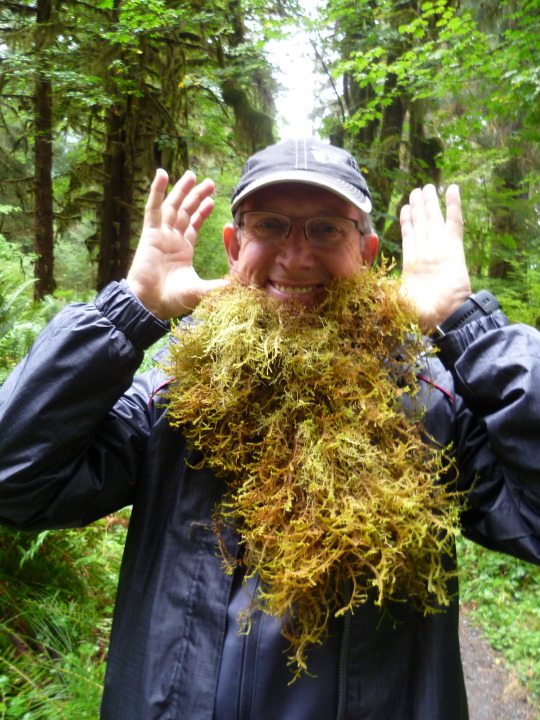
Over "Welkom in Canada" en geitenbaarden
Even een paar daagjes geen internet en dus geen blog. Gisteren aan het einde van de dag wat problemen om een plek voor de nacht te vinden. Een combinatie van mooi weer en het weekend maakt het dat ook veel Amerikanen onderweg zijn en daardoor de mooie plekjes snel weg zijn op het "Olympic Peninsula". Maar we raken aan de praat met een stel dat op een campsite "daily use only" staat (Salt Creek). En zij kennen via "their church" weer iemand die ook een campsite in de buurt heeft. Daar belt Barclay even voor ons op en binnen no time hebben we alsnog een plek voor de nacht. Jane had nog graag even doorgekletst met ons ...........
Kort daarvoor hebben we in Dungeness National Wildlife Refuge nog een mooie wandeling gemaakt. Het ligt aan de Straat van Juan de Fuca. Mooie kliffen en je ruikt de zilte zee heel erg goed. Je zou hier walvissen kunnen spotten. Heel dicht bij de Canadese grens: je kunt enkele Canadese eilanden zien liggen. We krijgen op de I-phone voortdurend berichtjes "Welkom in Canada".
Vanochtend vroeg vertrokken naar Olympic National Park. Het is weer een schitterende dag en we hebben prachtig uitzicht op ruim 5.000 feet hoogte. We ontbijten boven op de berg met een prachtig uitzicht. In het park zijn veel watervallen, prachtige meren en zelfs delen met regenwoud. We beginnen met de Hurricane Ridge: zeventien mijl naar boven. Daarna vervolgen we onze weg over de US 101 naar de Marymere Falls en de Sol Duc Hot Springs. Daar vinden we ook een campsite. We liggen een paar uur in de (stinkende) hot springs (maar wisselen wel af met een koude duik; in tegenstelling tot de Russen, Japanners en Amerikanen die alleen maar in het warme water liggen) en eten aansluitend in het restaurant daarnaast. Heerlijk (Regina: fettucini; Willem: heilbot). Morgen door naar Kalaloch Beach en het regenwoud van Quinault.
En dan de geitenbaarden: bij de wandeling op de top van de Hurricane Ridge komen we bomen met een bijzonder mos tegen: Goat Beard. En het ziet er ook echt zo uit.
0 notes
Photo

kalaloch creek, Forks, WA [oc] [2616x1536] via /r/EarthPorn https://ift.tt/2YVrFpb
0 notes
Photo





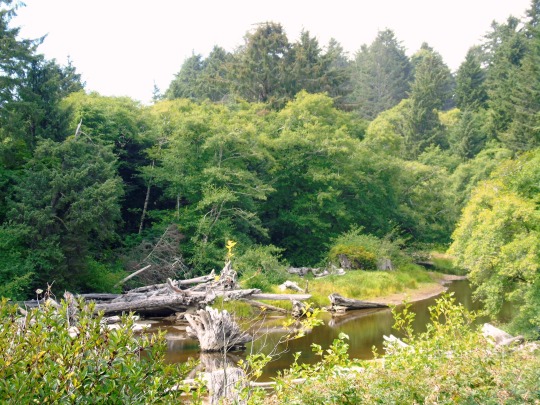
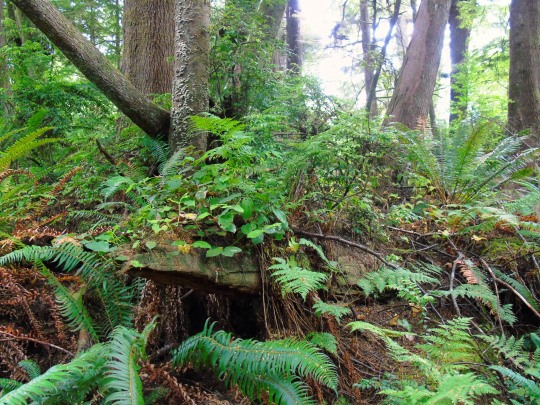
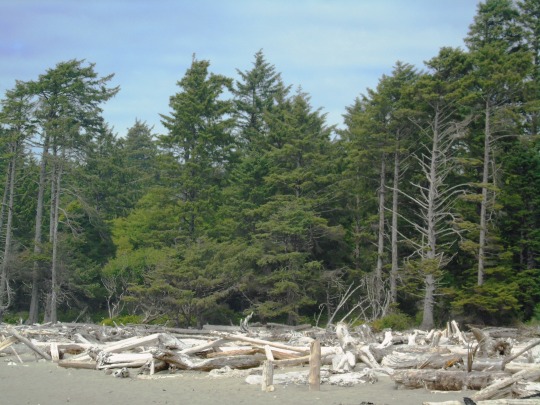

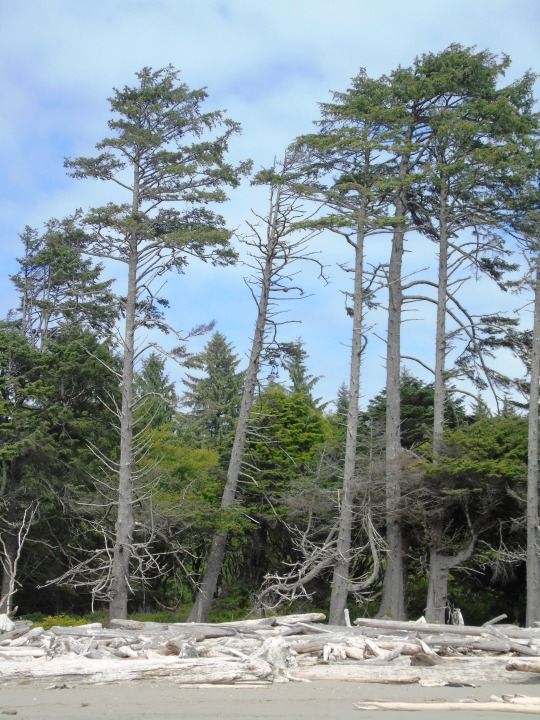
World Rainforest Day
Donate or volunteer your time to helping or raising awareness about how we can save the rainforests, and keep these crucial ecosystems alive.
The rainforests are keeping our planet alive. They’re home to half the world’s animal species, they provide us with freshwater, and are essential for keeping our climate stable. Yet every second, one and a half hectares is lost, while each year, 78 million hectares of precious rainforest are destroyed. That’s why World Rainforest Day has been created to take decisive action to combat deforestation, reduce the effects of climate change, and protect our rainforests for future generations.
Learn about World Rainforest Day
World Rainforest Day was first created in 2017 by the Rainforest Partnership. They work with Indigenous Peoples living in rainforest environments and launch projects to help restore and regenerate healthy rainforests with local communities. The day is about raising awareness of the importance of the rainforest and what it does for us. By coming together on the day, we can all take positive and hopeful action to protect the rainforest and preserve its lifespan as it has maintained our own lives for thousands of years.
There are hundreds of events, from within local communities to virtual events, education initiatives in schools, charity projects, and the hundreds of small actions we can take each day ourselves to protect the rainforest. Whether you’re going solo in your rainforest approach or part of a group of friends, family members, or colleagues, you’ll be forming part of a community spanning the entire globe. The website has award-winning videos, educational material, and advice for people looking to protect the environment.
The Rainforest Partnership itself has many community-based projects in the Amazon, but the day itself is backed up by the involvement of over 70 global partners, from environmental advocates to media outlets, all striving for positive and affirmative action that preserves the rainforest. The tagline for the event is “Because the World Can’t Wait”, a powerful statement and call to action for people worldwide.
History of World Rainforest Day
The key focus of the day is about remaining positive and focusing on what we can do to save the rainforest. Our rainforests have sustained us for thousands of years, circulating oxygen, keeping local communities alive, absorbing carbon dioxide, and keeping our water fresh and clean. The Rainforest Partnership has been spreading this optimistic message since 2007 when it launched to help protect biodiversity, Indigenous Peoples, and combat the effects of climate change.
The core focus of the Rainforest Partnership is to save the rainforest by working on rainforest-based community projects that create a positive impact on the local peoples and wildlife that rely on the rainforest each day. Although their headquarters are based in Texas, they are primarily in the rainforest with their Latin American based team. Why has the Rainforest Partnership been so successful? Because it’s partnered with organizations worldwide to create a unified response to deforestation. As an affiliated member of the UN Economic and Social Council, they can consult and advise organizations and businesses across the world on sustainable and ecologically led practices.
But just how long has the rainforest been helping us out for? The Amazon rainforest has existed for around 60 million years, forming when the Atlantic Ocean had expanded enough to create a tropical climate in the Amazon basin. Following the mass extinction of the dinosaurs, it is believed that a moister climate developed, leading to the expansion of the rainforest. Over millions of years, it is theorized that the rainforest might have suffered many reductions and expansions, caused by factors like expanding and contracting glaciers.
So why is the disappearance of the rainforest so dangerous this time around? The leading causes of deforestation include logging, mining, and industrial development, as well as the clearance of land for agriculture. As more extensive areas are cleared for logging and pasture, more infrastructure is needed, leading to increased clearance to accommodate roads and large machinery. As more and more rainforest is removed, the surrounding wildlife habitats and homes of Indigenous Peoples are also more significantly disrupted. The scale of deforestation can cause climate change, flooding, desertification, and soil erosion—all things which threaten our planet and our way of life.
World Rainforest Day Timeline
56-33 million years ago
It is estimated that the rainforest likely forms during the Eocene era, following a reduction of tropical temperatures when the Amazon basin is formed.
40000 BC Humans begin modifying rainforests
Humans are influencing the rainforests by living in them and modifying them throughout history.
1986 World Rainforest Movement begins
This international initiative was started to strengthen the movement of people all over the world in defense and protection of the rainforests.
1994 Rainforest Cafe opens
This jungle-themed restaurant opens its first location in Bloomington, Minnesota in the Mall of America.
2017 First World Rainforest Day
Launched to create awareness about the plight of the rainforest and people who inhabit it, World Rainforest Day was created by the Rainforest Partnership.
How to Celebrate World Rainforest Day
This is the perfect opportunity to take the burden off the branches of the rainforest and find ways to help protect the homes of its local wildlife and peoples. Find an optimistic outlook on preserving the planet by sharing on your social media and blogging about how you can save the rainforest. You might get involved by donating or raising awareness of charities like the Rainforest Partnership, or participating in virtual events and networks.
You can even host a rainforest awareness day yourself by arranging an event that highlights the cause or contributes towards a rainforest protection charity. If you’re not a fan of organizing events, why not participate in a sponsored run, climb, trek, or even walk to raise funds? You can also search for registered tree planting charities, where you can sponsor the planting of a tree to give back to the rainforest. If you’re trying to engage the kids, why not take advantage of the activity packs on the day’s website and distribute these to your friends and families for a day of fun-fuelled activities.
If you’re looking for the opportunity to make a lifestyle change, this day is also the chance to make eco-friendly choices to help save the future of our rainforest. For instance, deforestation due to agriculture is a big part of the rainforest reduction. Why not work to reduce your food waste by making sure you’re only purchasing and using what you need? Buying goods from ethical companies that donate to the environment is also a sure-fire way to ensure its protection.
Helping your local wildlife is also an excellent way to sustain global biodiversity, and even help some migrating birds on their way home. Plant insect-attracting flowers in your garden or balcony to share some love with our feathered friends as they fly back to their tropical climate. This day is the perfect opportunity to take many small steps or host one big event to show our appreciation for our rainforest.
World Rainforest Day FAQs
What is the theme of World Rainforest Day?
The theme for each World Rainforest Day changes each year, with past themes including “Protected together. Now. Forever.” and “Protected Together”.
Why do we celebrate World Rainforest Day?
Celebrating the natural resources of the rainforests of the world, World Rainforest Day encourages humans to protect and preserve them.
When is World Rainforest Day Celebrated?
World Rainforest Day is celebrated each year on June 22.
What is the most interesting fact about the rainforest?
Rainforests take up only 3% of the area of the planet, but are home to more than half of the planet’s species.
Who started World Rainforest Day?
World Rainforest Day was started in 2017 by the Rainforest Partnership, which is an organization that creates people-powered solutions to protect the deforestation problems in the rainforest.
Source
#World Rainforest Day#WorldRainforestDay#22 June#Olympic Peninsula#Olympic National Park#Kalaloch Beach#driftwood#sand#coast#travel#Pacific Northwest#Washington#landscape#countryside#forest#tree#tourist attraction#landmark#Kalaloch Creek#riverbank#cliff#temperate rainforest#original photography#summer 2017
1 note
·
View note
Photo
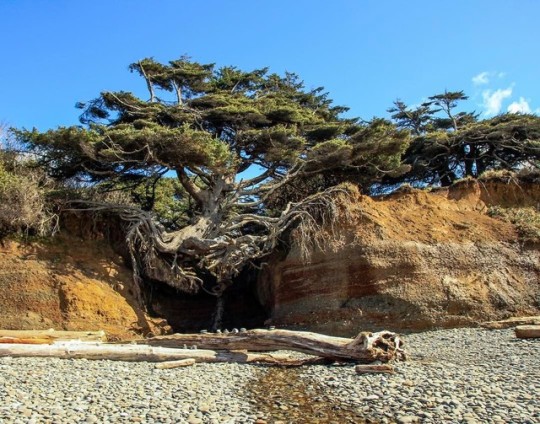
@haleyestlick and I have been wanting to see the Kalaloch Tree Of Life for a while now. So, for her birthday I made a surprise trip there with her. As the shoreline has receded over time, the creek that runs below the tree has eroded a cavern beneath the roots. Even though the center of the tree is no longer supported, the roots that extend out to sides are massive, strong and able to soak up enough water to keep the tree green and full of life. #kalalochtreeoflife #kalalochtree #kalaloch #kalalochbeach #olympicnationalpark #pacificcoast
10 notes
·
View notes
Text
7 Of Our Favorite Dog-Friendly National Parks
#Poop4U
The post 7 Of Our Favorite Dog-Friendly National Parks by Abbie Mood appeared first on Dogster. Copying over entire articles infringes on copyright laws. You may not be aware of it, but all of these articles were assigned, contracted and paid for, so they aren't considered public domain. However, we appreciate that you like the article and would love it if you continued sharing just the first paragraph of an article, then linking out to the rest of the piece on Dogster.com.
Editor’s Note: Always check the park’s website before heading out in case policies have changed. All parks require pets to be on a 6-foot leash at all times. All U.S. National Parks websites can be found at nps.gov.
Having a dog means having a constant sidekick who is always up for an adventure. While there are many spots around the country where dogs are more than welcome, national parks are a bit more restrictive. And it makes sense — national parks often have fragile ecosystems with a rich wildlife population, so rules are in place to protect the park, its wildlife and your pet.
Many national parks and historical areas/monuments only allow on-leash dogs within a certain distance from the road, picnic area or campground (like at Joshua Tree National Park), but some parks have something for everyone, including dogs! Here are a few of our favorites.
Acadia National Park, Maine
If you’re craving the salty, ocean air and sound of waves crashing, head to Acadia National Park and you won’t have to leave Fido at home. Dogs are allowed on all 100 miles of hiking trails and 45 miles of carriage roads, as well as the Blackwoods, Seawall and Schoodic Woods campgrounds. (Fun fact for you early birds: Acadia is the first place in the United States where you can watch the sun come up in the morning!)
Photo: Ron Karpel | Getty Images
Grand Canyon National Park, Arizona
Who doesn’t have the Grand Canyon on the bucket list? Luckily, your dog can tag along, too — on any trail above the rim as well as the Mather Campground, Desert View Campground and Trailer Village. If you want to explore the trails in the canyon, many hotels in the area are pet-friendly, and the South Rim Kennel is available if you need to board your dog.
Photo: Sara Valenti | Getty Images
Olympic National Park, Washington
Dogs are only allowed on certain trails in this park on the Olympic Peninsula, but it’s worth the trip to take in the lush forest and driftwood-laden beaches. Pets can accompany you on a trek on Peabody Creek Trail, Rialto Beach parking lot to Ellen Creek, the beaches in the Kalaloch area between the Hoh and Quinault Reservations, Madison Falls Trail, Spruce Railroad Trail and July Creek Loop Trail.
Photo: Wilsilver77 | Getty Images
Harpers Ferry National Historical Park, Maryland, Virginia and West Virginia
You and your dog can go anywhere in this Civil War historical park — except on the park shuttle or in buildings — so explore wherever you’d like. Another perk to bringing your dog here is you have plenty of additional hiking options along the famous Appalachian Trail — it runs right through town!
Photo: Jose A Feliciano Cestero | Getty Images
Great Sand Dunes National Park, Colorado
Tucked away in the Sangre de Cristo mountains in Southern Colorado lies a 30-square-mile sand dune field. This unique spot allows dogs on many of the designated trails in the Main Use Area of the park, including Piñon Flats Campground and even out on the dunes (just not beyond the first high ridge). The sand can get very hot in the summer, so only take your dog out in the morning or evening.
Photo: scgerding| Getty Images
Cuyahoga Valley National Park, Ohio
Dogs are allowed on more than 110 miles of hiking trails and 20 miles of the Towpath Trail along the Cuyahoga River. Known for its beautiful waterfalls and gorgeous fall colors, the national park should be on any road-trip list.
Photo: typhoonski | Getty Images
Padre Island National Seashore, Texas
Dogs are allowed pretty much anywhere here. The only place they can’t go are inside buildings, but with more than 60 miles of beach to explore and five camping areas, there is plenty of room for everyone to romp.
Follow these rules to make sure dogs can continue to visit our national parks for years to come:
➼ Keep your dog on a 6-foot leash. Off-leash dogs can be a danger to wildlife or themselves (many parks are in rugged areas) or might bother other visitors, even if they’re trying to be friendly.
➼ Respect wildlife. Even on-leash, don’t let your dog dig or otherwise disturb nests, holes or habitats.
➼ Always pick up your dog’s waste and properly dispose of it.
➼ Never leave your dog in the car. Cars heat up much faster than the outdoors, so make sure your dog is allowed to hit the trails before you go to the park to avoid any issues.
➼ Never tie your dog up at the campsite.
➼ Get a GPS tracker for your dog’s collar. If your dog happens to get loose, a GPS tracker can help you find him.
➼ Train your dog to follow basic cues, like Stay, Come and Heel. Not only is it good manners, but it will help keep everyone safe.
The next time you are going on a family trip to a national park, don’t worry about leaving your dog at home — with a little extra planning (and maybe some new ideas from this list), everyone can join in on the fun.
Top photograph: Try Media | Getty Images
Read Next: Hiking With Dogs: A Guide to Safely Taking a Hike With Your Dog
The post 7 Of Our Favorite Dog-Friendly National Parks by Abbie Mood appeared first on Dogster. Copying over entire articles infringes on copyright laws. You may not be aware of it, but all of these articles were assigned, contracted and paid for, so they aren't considered public domain. However, we appreciate that you like the article and would love it if you continued sharing just the first paragraph of an article, then linking out to the rest of the piece on Dogster.com.
Poop4U Blog
via www.Poop4U.com
Abbie Mood, Khareem Sudlow
0 notes
Text
8 Best RV Parks in Washington State
RV camping is a regional pastime in Washington State, so it’s no wonder that there are numerous wonderful RV parks to choose from when planning a camping trip.
Our Evergreen State is known for its lush pine forests and majestic mountain ranges, so it will come as no surprise that Washington residents enjoy spending lots of time camping in nature.
We know you’re on the hunt for the best parks to set up camp in Washington State, and we want to help you find them. Kirkland RVs team of RV connoisseurs decided to find the eight best RV parks in Washington State so that you have a resource to consult when it comes time to plan your next trip.
Here are our top 8 picks for best RV campgrounds in Washington State.
1. Olympic National Park Camping
Explore the gorgeous Olympic Penninsula in maximal comfort by reserving a spot at Eagle Tree RV Park.
Adjacent to some of Washington State’s most exotic landscapes (visit the Hoh Rainforest if you have the chance!), Eagle Tree RV Park offers convenient amenities to RV campers such as full hookups, showers, and a WiFi connection.
2. Icicle River RV Park
Near to one of Washington State’s prided historical sites (a small Bavarian town called Leavenworth), Icicle River RV Park offers conveniences such as hot showers and laundry facilities.
Take the opportunity while at this RV campground to explore Leavenworth and learn more about the historical sites surrounding you.
3. Whiskey Creek Beach Campground
Whiskey Creek Beach Campground offers stunning views of the Strait of Juan De Fuca as well as wildlife. Be on the lookout for otters, seals, whales, and bald eagles as you catch the sunrise under your RV awning.
Escaping into nature for a breath of fresh sea air and a relaxing few days at one of Washington’s best RV parks is the ultimate kind of getaway.
4. Midway RV Park
If you are looking for a sweet halfway point between Seattle and Portland, Midway RV Park might just be Washington’s best campground for you. Enjoy the quiet of nature with the luxury of two of America’s coolest cities, only a short drive away.
5. Harmony Lakeside RV Park & Campground
Serene lakeside afternoons and outdoor activities? Yes, please!
At Harmony Lakeside RV Park, you will find a fun-filled community of RV campers who have made it their mission to reconnect with nature by finding the best, most peaceful RV park in Washington State.
With shower and WiFi access for campers, Harmony Lakeside RV Park will feel more like an RV resort for campers. Enjoy the perfect ambiance of being surrounded by nature while also having all of the amenities of home at your fingertips.
6. Lake Pleasant RV Park
Located in Bothell, a short drive from Seattle, Lake Pleasant RV Park offers a serene waterfront scene to campers. If you are looking for a quiet, natural landscape only a short way from the main city, Lake Pleasant RV Park in Washington State will suit.
With hiking trails for the active campers and a golf practice green for avid golfers, this Washington State RV campground is ideal for families and solo travelers alike.
7. Kalaloch Campground & RV Park
Offering seaside views and peaceful forest walks, Kalaloch is one of the most visited areas in Olympic National Park — making it one of the best places to park your RV for a few days of beachy twilight hours and sultry Washington evenings.
The Olympics will be your playground in nature’s best RV resort as you spend a few days recouping as a family and enjoying all the best that Washington State has to offer.
8. Columbia Sun RV Resort
If you’re feeling fancy, reserve a parking spot at Columbia Sun RV Resort in Kennewick. This amenity-packed RV resort is the perfect place for campers who want a relaxing vacation while still being able to enjoy nature and Washington’s best sunsets.
With a heated swimming pool, hot tub, and private showers, this Washington State RV resort affords every luxury to RVers.
Besides all of the luxurious amenities, Columbia Sun RV Resort builds a sense of community among campers. There are sports and recreational activities that RVers partake in together. Facilities like a fitness center and sports courts are just a few that Columbia Sun RV Resort can boast of.
Find the RV of Your Dreams & Set out to Find the Best RV Parks Washington Has to Offer
Here at Kirkland RV, we offer a wide variety of RVs curated to match the needs of various campers. No matter if you are a family looking for the utmost convenience or a solo-traveler trying to find an affordable travel vehicle, we can help you find the perfect RV.
Call or contact Kirkland RV today and let us help you find the RV of your dreams so that you can enjoy the best RV parks and nature that Washington State has to offer.
The post 8 Best RV Parks in Washington State appeared first on Kirkland RV Sales.
via Kirkland RV Sales https://kirklandrvsales.com/best-rv-parks-washington-state/
0 notes
Text
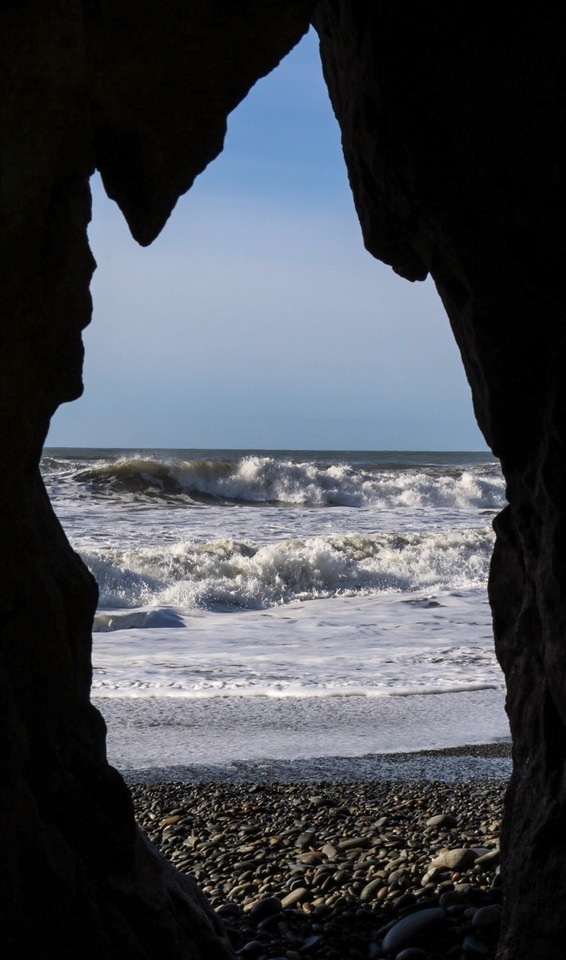


Gravel and logs and ocean and sea stacks and a small spit built across the mouth of a creek. Ruby Beach. North of Kalaloch WA
11 notes
·
View notes
Text
One of the most popular places or topics we cover is Olympic National Park. We’ve created so many articles and shared so much because it’s a dream destination for so many. It’s practically our backyard, so allow us to guide you and help you have an incredible time exploring.
What began as Olympus National Monument until President Franklin Roosevelt was able to turn it into Olympic National Park, it’s one of the most fascinating national parks to visit. Is there any other national park where you can explore a rainforest and then go lay on a beach in the same day? Can you think of a place that’s completely unspoiled with turquoise waters and then drive up the hill to see a mountain river in recovery following the most successful dam removal project in the USA?
Olympic National Park Family Travel Guide
You’ll never be at a loss for activities in Olympic National Park. These are our top recommendations, particularly for visiting with kids. Summer is kind of the only time for (nearly guaranteed) good weather since the Olympic Peninsula is directly on Pacific Ocean and it’s subject to weird ocean driven weather, but if you’re around in the fall or spring, it’ll still be gorgeous in its own way.
Hiking in Olympic National Park
There are two different types of hiking for you to experience in Olympic National Park: alpine hiking and forest hiking. Depending on the weather and what your hiking motivation is, you can choose from a variety of trails.
Alpine and elevation gain hiking
Hurricane Ridge is the spot to go for alpine hiking if you’ve got kids or aren’t in prime hiking shape. There are many trails, including some that go deep into the Olympic Range, offering views of the mountains, lakes, glaciers and even all of the way to Victoria BC.
Dosewallips and Staircase both have more intense trail systems that will take you directly up from near-sea level into the alpine areas of the Olympics. It’s been years since we’ve hiked either since the elevation gain is a lot and happens quickly… and little kids don’t tend to love vertical climbs. Deer Park also has some wonderful, elevating trails if you’re in the mood for some awesome hikes.
Beaches and Waterfall hiking
Did you know that waterfalls are kind of the best thing ever with kids? It’s true, and thank goodness because both Olympic National Park and Olympic National forest are absolutely loaded with them. Sol Duc Falls is the perfect hike to experience both a gorgeous waterfall AND epic mossy forests. We call it one of the must-see sites/hikes in the Park.
Marymere Falls, out of the Storm King area of Lake Crescent, is another hike that’s great with kids. It’s easy (for the most part) and there is a nice spot to enjoy the river. A bit away to the east you’ll find the Elwha Valley area. Here you’ll find both Madison Creek Falls, which is tiny but pretty, and the actual Elwha River. The Elwha is special for lots of reasons, but the primary one being that it’s the site of a successful dam removal and now the restored habitat of salmon runs. (articles to come)
Lake Quinault near Kalaloch also has several waterfalls on its south shore. We’ve yet to hike all of them so cannot make official recommendations, but know that they are there and the hikes are not very long.
If you are on the east side of Olympic National Park we have two solid recommendations for great waterfalls. Murhut Falls is just outside of the national park in the Olympic National Forest. Both it and Rocky Brook Falls are crazy pretty and give some tropical falls we’ve visited a run for their money.
When it comes to beaches, the prettiest beach in all of Washington State is a part of Olympic National Park: Ruby Beach. You’ll find tide pools, wildlife, and stretches of perfect sand. To the north of the Hoh Rainforest you’ll also find the beaches of La Push, including beaches 1-3 and Mora Beach. They’re gorgeous, and La Push is also great for kayaking.
Epic trees and the rainforest
The Hoh Rainforest is one of our favorite places to bring out of town visitors. If you want to experience the ultimate in old grown forest covered in moss moss moss then this is the spot for you. There is a variety of hiking to experience in the Hoh Rainforest, so visiting multiple times throughout the year is recommended.
Tip: fall is the most beautiful time for the changing colors in the Hoh.
On the southern edge of Olympic National Park are a few other spots with enormous trees. The Quinault Rainforest (article to come) is also incredible, but not as dripping and deep green as the Hoh. Full of level, easy trails, the Quinault Rainforest is a great place to visit with kids. Nearby Kalaloch also has some epic trees, from the Big Cedar to the cave tree, so check it out too!
Accommodations around Olympic National Park
When you’re planning your trip to Olympic National Park there are three different approaches you can take for your lodging. Depending on your time at the park and overall itinerary you can really have an unusual experience.
Camping – Sol Duc, Kalaloch, Heart O’ the Hills, Hoh… you’ve got several options. Check the recreation.gov site for availability at Kalaloch and Sol Duc, but for the other campgrounds they are first come, first served.
Lodges – the Lodges of Olympic National Parks and an assortment of other hotels peppered around the Olympic Peninsula can provide an easy option if you want to bounce around.
BNBs and Online booking – with lots of interesting lodging choices ranging from actual Bed and Breakfasts to AirBNBs, you’ll find some good spots. Things to think about if you’re leaning towards Glamping Hub, AirBNB, or HomeAway sites include minimum number of nights, proximity to your daily plans and if kids/pets are allowed.
So now, are you ready to go tackle Olympic National Park? As we complete more and more content about this amazing place we’ll add more links and ideas. It’s one of our favorite places to escape for a week or a weekend!
Want to pin this for later? Go for it!
Family guide to Olympic National Park One of the most popular places or topics we cover is Olympic National Park. We've created so many articles and shared so much because it's a dream destination for so many.
0 notes
Photo
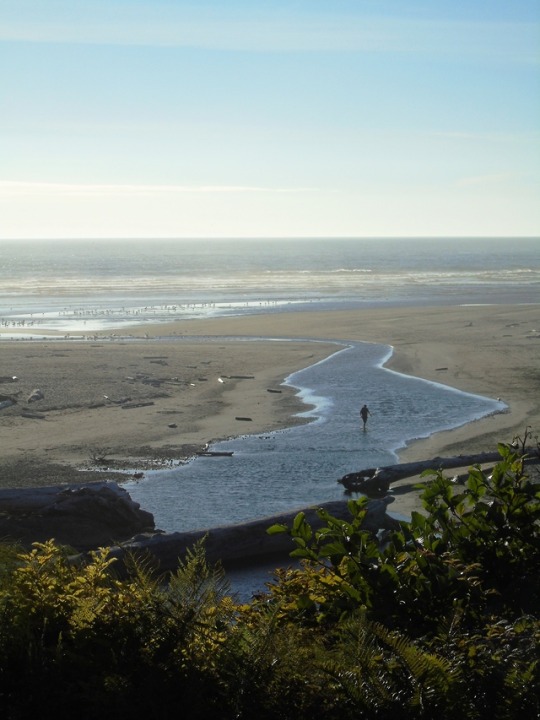
Kalaloch Creek
What do you think about my pic?
#Kalaloch Creek#What do you think about my pic?#Kalaloch Beach#seascape#view#Pacific Ocean#Washington#Olympic National Park#beach#sand#flora#evening light#horizon#travel#original photography#vacation#USA#summer 2017#nature#landscape#countryside#Olympic Peninsula#grass#landmark#tourist attraction
4 notes
·
View notes
Photo
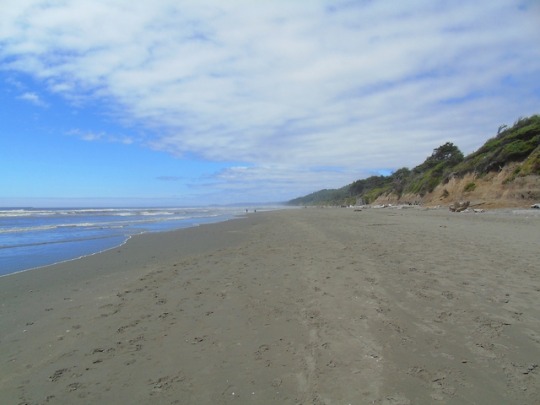
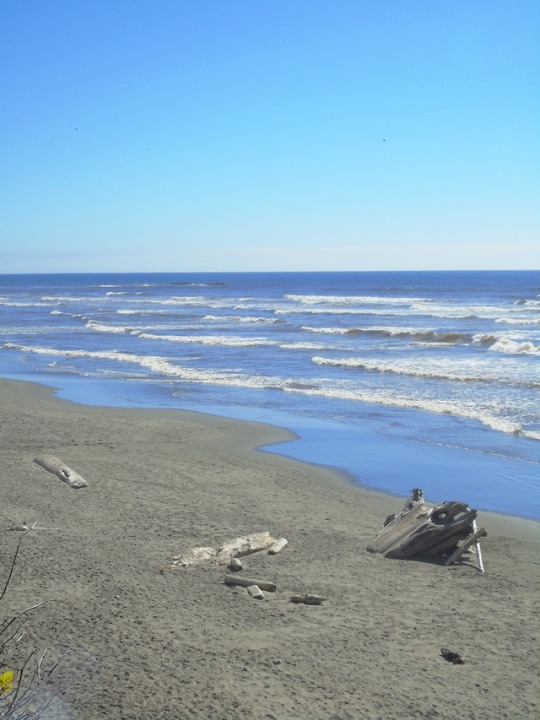
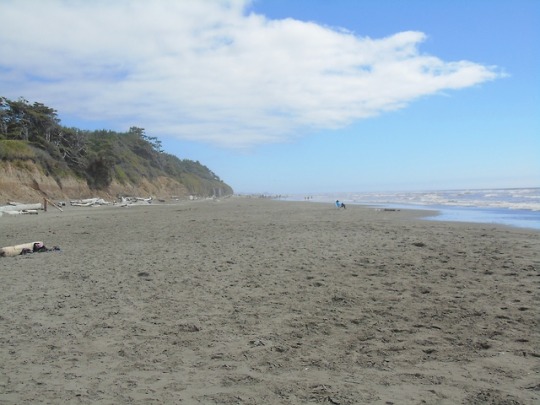
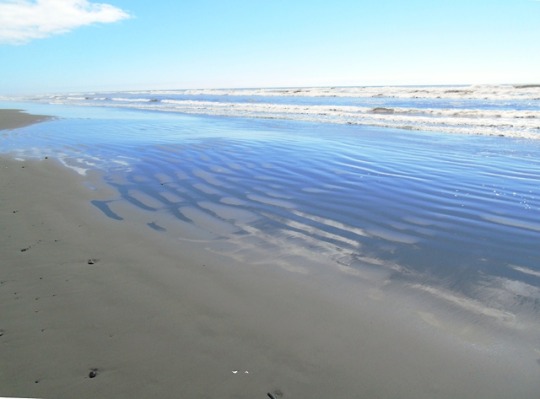
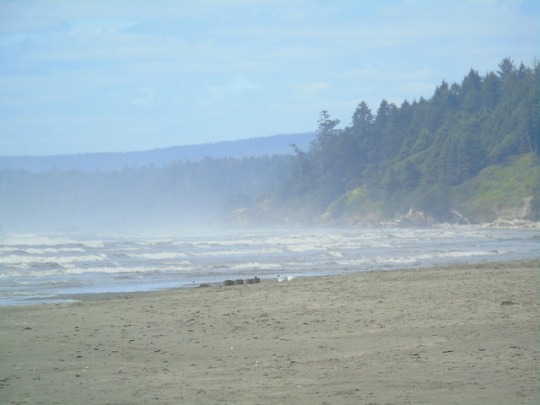
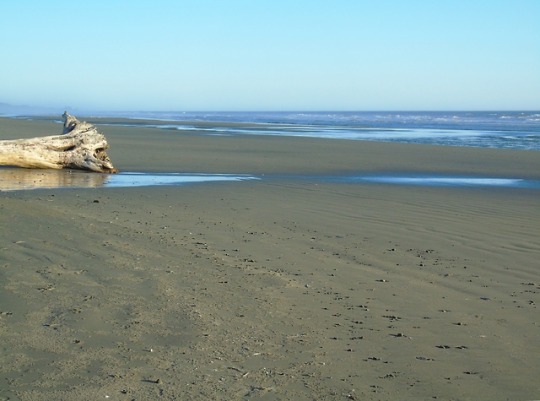
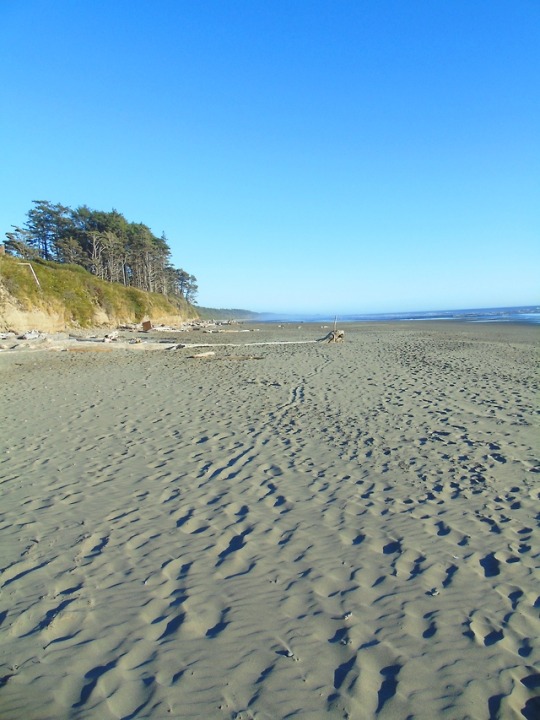

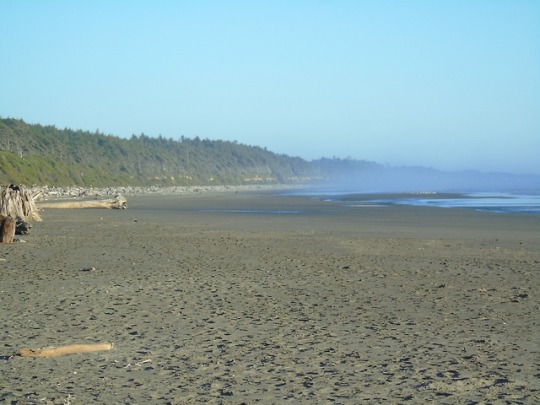

Kalaloch Beach (No. 2)
Olympic National Park is an American national park located in the State of Washington, on the Olympic Peninsula.The park has four basic regions: the Pacific coastline, alpine areas, the west side temperate rainforest and the forests of the drier east side. Within the park there are three distinct ecosystems which are sub-alpine forest and wildflower meadow, temperate forest, and the rugged Pacific Shore. These three different ecosystems are in pristine condition and have outstanding scenery.
President Theodore Roosevelt originally created Mount Olympus National Monument on 2 March 1909. It was designated a national park by President Franklin Roosevelt on June 29, 1938. In 1976, Olympic National Park was designated by UNESCO as an International Biosphere Reserve, and in 1981 as a World Heritage Site. In 1988, Congress designated 95 percent of the park as the Olympic Wilderness.
Source: Wikipedia
#Kalaloch Beach#pacific ocean#sea#sand#beach walk#fog#forest#landscape#countryside#waves#nature#seascape#cliff#driftwood#afternoon#evening light#Kalaloch Creek#Olympic National Park#washington#usa#original photography#travel#vacation#summer 2017#road trip
1 note
·
View note